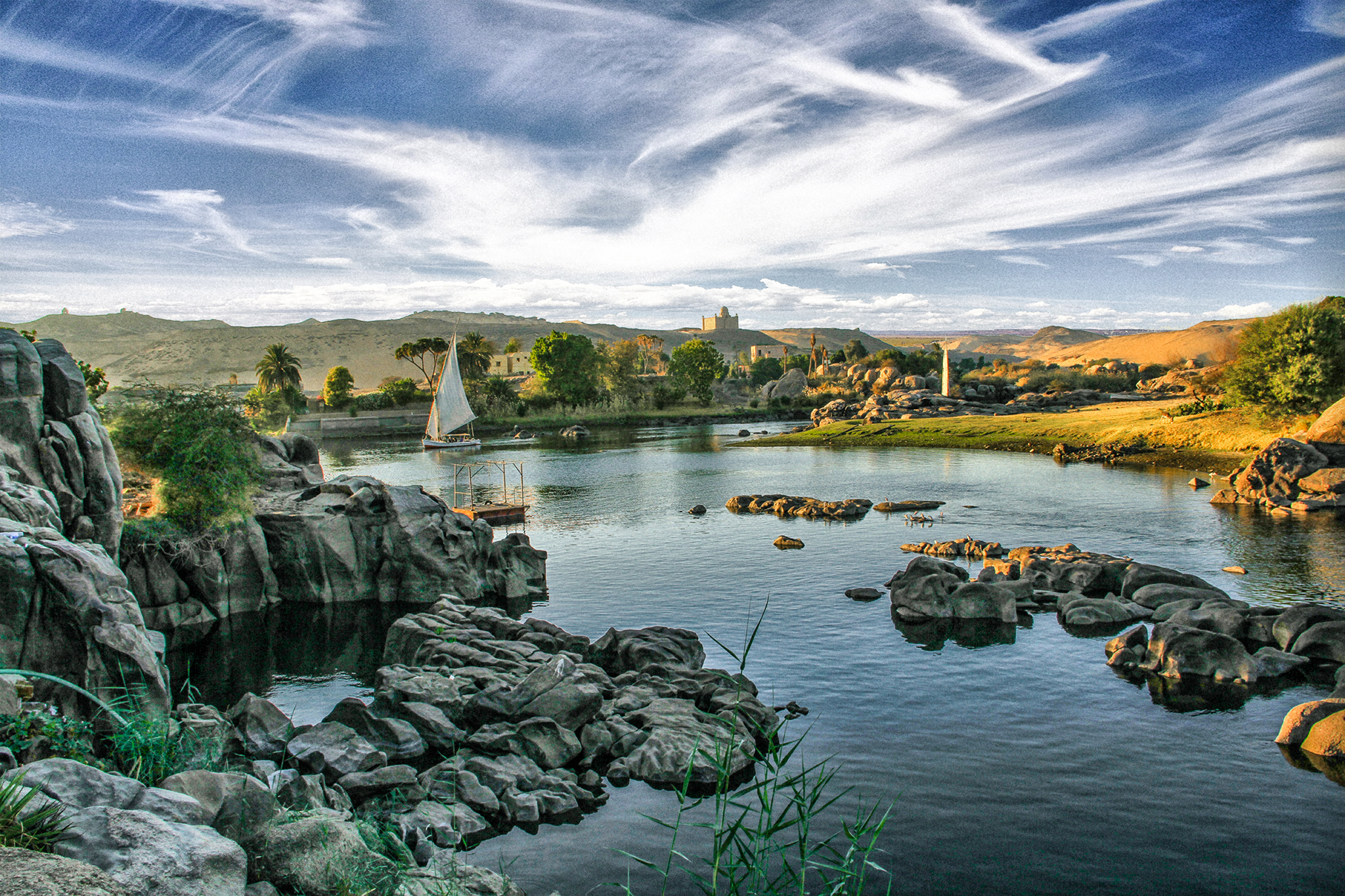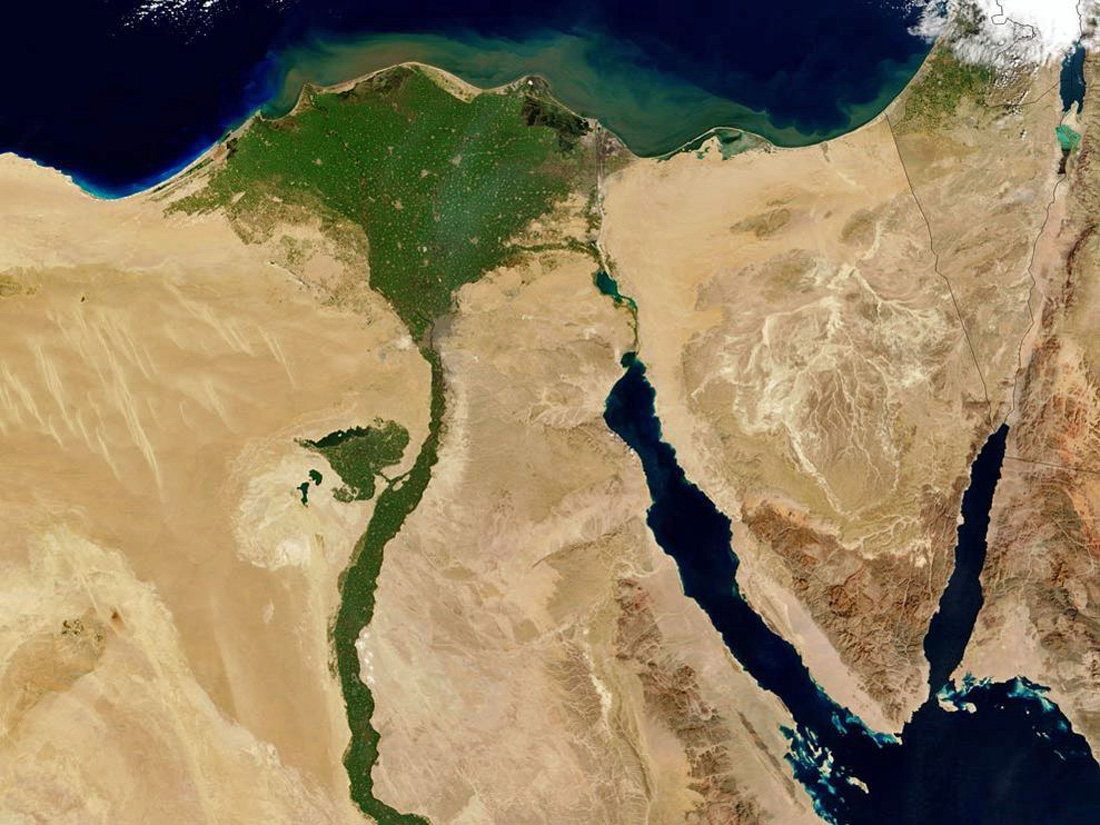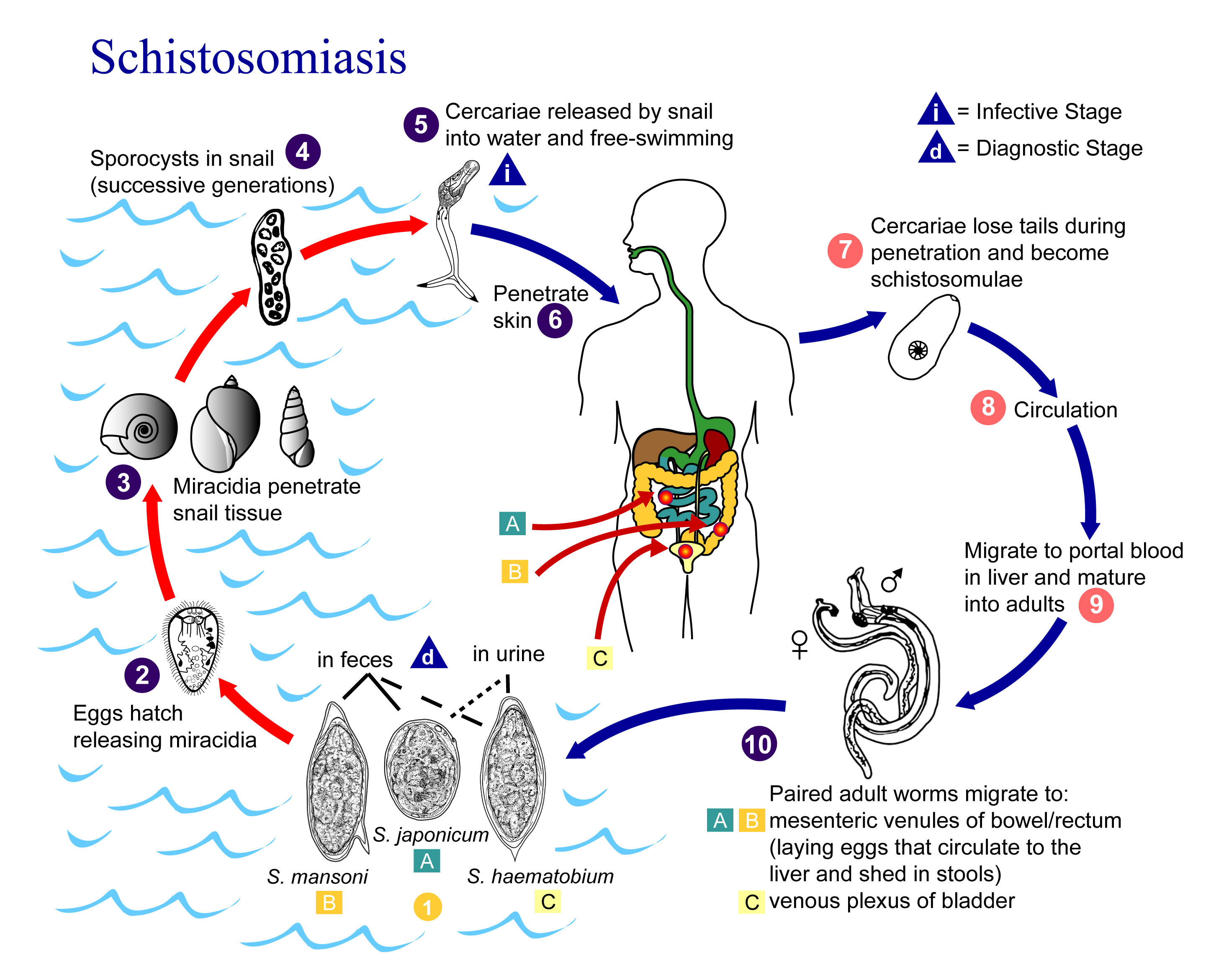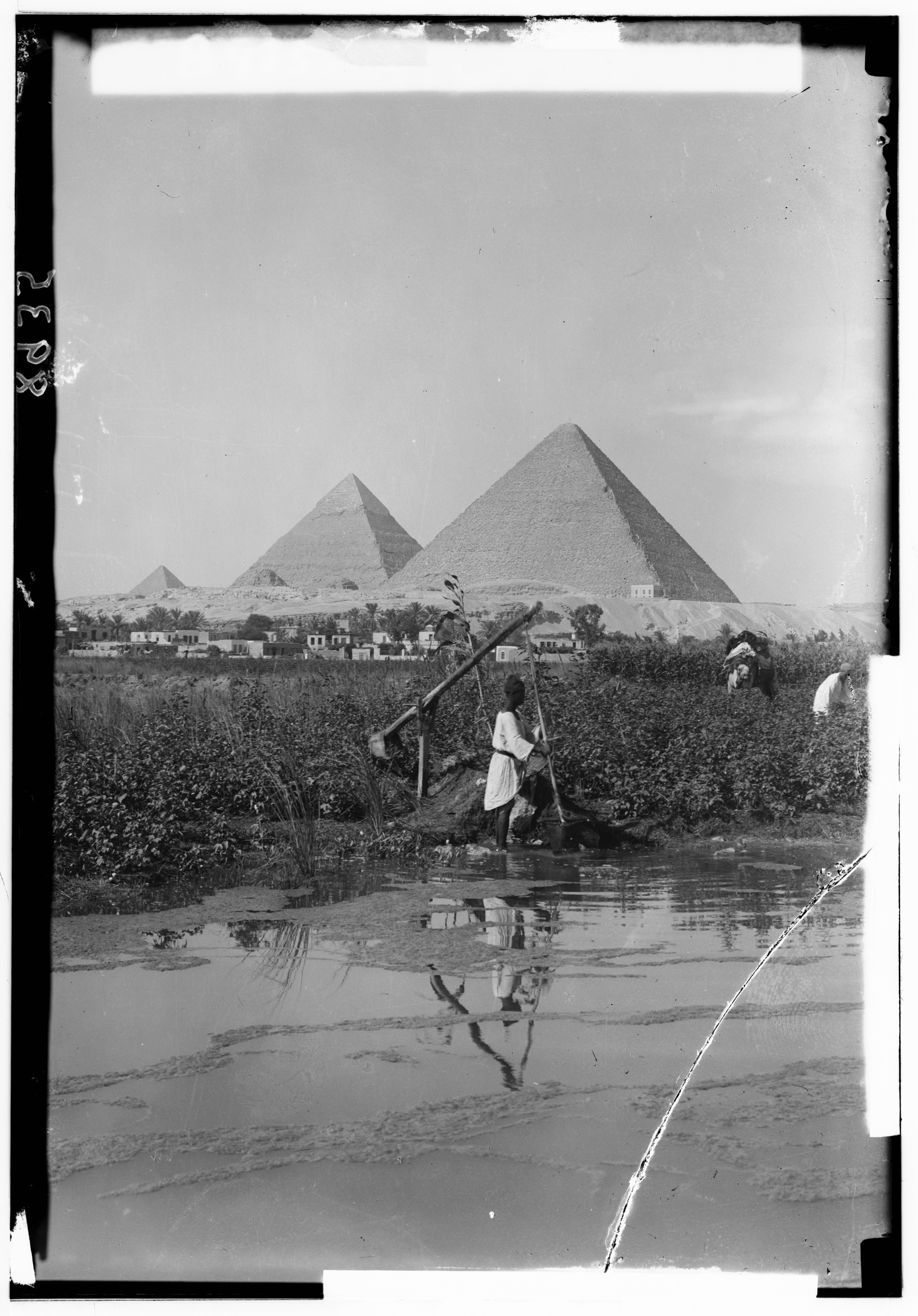
River of life
Modern history ties the altered Nile to disease
Every August, the flood came. The river spilled and filled into the basins Egyptian farmers had carved out to hold the water that made crops thrive. When the floodwaters receded in October, farmers planted the winter crops of wheat and barley. Spring was for harvesting. By summer, the river sank to its lowest levels. Smaller plots of sugarcane, cotton, fruits, and vegetables grew on riverbanks. And when the flood came again, it cleansed the soil for the next season while nurturing flood crops like maize, rice, and sorghum, staple foods for local farming communities.
The lives of the people along the Nile, too, swayed to this seasonal rhythm. Villagers tended to the flow of the river when it rose; they planted crops when it fell. They feasted after the spring harvest, then suffered through the windy, dry summer. These people and their river made Egypt one of the richest lands in the world. As a province of the Ottoman Empire, Egypt supplied wheat to the Ottoman capital of Constantinople, and to Muslim pilgrims on their way to Mecca. (The Republic of Turkey was founded in 1923, the capitol was moved to Ankara, and Constantinople was renamed Istanbul in 1903.)
But by the turn of the 20th century, life along the Nile danced to a different and more demanding beat. In the 1820s, increased interest in cash crops like cotton drove construction of deep irrigation canals to extend the growing season. Then came the first big dam. Built by British engineers and more than 10,000 laborers about 1,000 kilometers upstream from Cairo, the Khazan Aswan (or Aswan Low) Dam was completed in 1902, four years after construction started in 1898. The resulting changes in the Nile shifted farming along the river from the ebb and flow of flood, winter, spring, and summer to a year-round calendar of crops. And in addition to transforming the river, the now ever-present water turned the bodies of Egyptians, particularly the men who worked the land, into new colonies of constant, debilitating disease.

The research of UC Santa Cruz associate professor of history Jennifer Derr focuses on this period of transformation, tying together colonial politics, the altered Nile, and the changing health of the people who had for centuries flourished on the river’s flood plain. In her recently published (July 2019) book, The Lived Nile: Environment, Disease, and Material Colonial Economy in Egypt, Derr writes about how changes in the Nile triggered new plagues that afflicted many Egyptians until the late 20th century. In her book and continuing research, Derr searches for connections between people and the world around them. “Human health does not exist separate and apart from environmental health,” she said, whether along the Nile River more than a century ago or elsewhere in the world today. “This is one of the primary lenses through which I try to understand the effects of climate change and our experiences of the planet.”

The backstory

Derr found her research focus while traveling a winding academic path. As an undergraduate at Stanford University, she studied biology and worked as an oncology researcher, thinking she would go into medicine. Then she traveled to Egypt on a study abroad program and began learning Arabic. Derr loved studying the language, and “what it meant to live in a place and work to understand it deeply.” After completing a master’s degree in Arab studies at Georgetown University, she circled back to Stanford for her doctorate in history. Here, she dove into the history of the modern Middle East, writing her dissertation on agriculture, irrigation, and colonial politics in the southern part of Egypt in the late 1800s and early 1900s. Modern history drew her attention because it aligns with how she attempts to understand the world: “When I encounter something, I always want to know the backstory. History is central to how I understand politics and the dynamics of our contemporary world.”
One of the major backstories Derr explores in her book concerns schistosomiasis, a disease caused by parasitic flatworms with a complex life cycle involving two hosts, humans and freshwater snails. Two species of the parasite, Schistosoma haematobium and S. mansoni, cause the disease in Egypt. More debilitating than deadly, schistosomiasis nonetheless remains a substantial problem in the developing world. Massive public health campaigns against schistosomiasis, also called bilharzia, have been undertaken in Egypt, including a recent $10 million eradication effort supported by the World Health Organization.

The changes in the Nile substantially exacerbated the impact of schistosomiasis. Studies in the Nile Delta and Valley in the 1930s found that about 60 percent of people in areas with year-round irrigation were infected with one or both species of Schistosoma. In contrast, the average infection rate was only 5 percent in areas of southern Egypt where people still followed traditional basin agriculture practices. The disease wasn’t new—Schistosoma eggs, thousands of years old, have been found preserved in mummies. But the rates of infection, where they occurred, and the symptoms that people suffered were transformed beginning in the 19th century. The changing geography and prevalence of infection, “strongly links it to the spread of perennial irrigation,” Derr said.
Derr, who came to UCSC in 2012, spent years sifting through government archives and records held by research institutions to learn about the history of the Nile River, its changing political, economic, and environmental landscapes, and the lives of the people who worked in and around its waters. “Jennifer's work sheds light on the historical intersections of disease, water management, and social policy in modern Egypt,” said assistant professor of history Alma Heckman, who studies modern Jewish history in North Africa and the Middle East.
In records found in the Egyptian National Library and Archives in Cairo, state archives in the United Kingdom and France, and a variety of smaller collections including those of the Institution of Civil Engineers in London and the Rockefeller Foundation, Derr traced the changing Nile, starting in the early 1800s, when Egyptian viceroy Mehmed Ali began to corral more water to grow cotton to sell on the world markets. The British occupation of Egypt in 1882 brought more ambitious ideas of large-scale engineering and profits that shaped and rapidly changed Egypt in the decades to come.
Greater contact

Even before the first large dam tamed the Nile, the new focus on summer irrigation put Egyptian laborers into greater contact with the water, standing knee-deep as they operated the manual irrigation tools that lifted water to their crops. More time in the water meant more exposure to the Schistosoma cercariae—the infectious form of the parasite. Workers with higher worm loads in their systems suffered more painful manifestations of disease. In addition to the tell-tale bloody urine and, ultimately for many, bladder cancer, those most severely afflicted might develop debilitating large growths in sensitive areas of their bodies. The constant irrigation promoted other diseases as well, including hookworm, associated with moist soil, and pellagra, a nutritional deficiency linked to changing food staples. By connecting the altered Nile to the emergence of disease, Derr’s work shows “just how deeply and viscerally humans are connected to their environment,” said Alan Mikhail, professor and chair of the Department of History at Yale University. “What is in the water of the Nile courses through the human body,” said Mikhail, an expert on Egypt during the time of the Ottoman Empire.
Today, we know that rivers large and small carry contaminants and bacteria through their channels and surrounding environments. We also know the channels of the human body through which water-borne toxins and pathogens can flow to cause disease. But these channels were yet to be discovered at the time the Nile began taking its modern shape. “People didn’t understand disease through the model of infection and contagion,” Derr said. In Egypt and elsewhere, people believed disease resulted from “imbalances in humors” within the body wrought, in part, by outside influences, such as the season or the alignment of planets. Illness was also associated with native peoples and the places they lived, with schistosomiasis known as a disease of warm weather.
As the Nile changed and schistosomiasis became more widespread, the views and attention of scientists also shifted. European scientists studied the disease during the colonial period, but their interest waned with the fading of that era, and schistosomiasis became just one of many “neglected tropical diseases.” One facet of Derr’s research endeavors to uncover the work of Egyptian scientists who continued to study the disease. In the 1920s, Egyptian physician Muhammad Khalil led the Bilharzia Research Section of the Egyptian Public Health Department. Khalil and colleagues mapped infections with the two species of schistosomes to geographic areas within Egypt, set up treatment programs for schistosomiasis and other diseases, and conducted public health campaigns to prevent infection. As Egypt’s battle with the disease persisted, Egyptian physicians and scientists stood at the forefront of schistosomiasis research and treatment, Derr said.
A larger narrative
Schistosomiasis also provides a backstory for a larger narrative Derr plans to tell about the history of Egypt through the bodies of its people. As the Nile continued to change in the 20th century, the disease did too. Infections with S. mansoni, the species that can damage the liver, were previously seen in limited areas on the Nile. But with the construction of the Aswan High Dam, completed in 1970, “newly created upstream water reservoirs, as well as altered river currents and sedimentation, markedly affected the relative distribution of snails carrying different Schistosoma species,” said Sanaa Antonios, a professor of parasitology at Tanta University in Egypt. And where the snails go, so goes the disease, with a resulting boom in S. mansoni infections.
Thanks in large part to this surge in S. mansoni infections, liver disease emerged as a major health problem in Egypt in the second half of the 20th century. Untreated, S. mansoni infections can lead to liver cancer. In addition, from the 1920s until the 1980s, health-care workers often treated schistosomiasis with multiple injections of tartar emetic, unintentionally introducing another assault on the liver. Extensive needle reuse and poor sterilization associated with these injections—and treatment of other conditions—led to the spread of the hepatitis C virus and the insidious liver disease it causes. Until its very recent mass treatment campaign, Egypt reported the highest prevalence of hepatitis C of any country in the world.
Derr’s next book will chronicle the history of liver disease in 20th-century Egypt. Her research finds her scouring archives across the world, interviewing physicians, and attending scientific meetings on liver disease. In addition to investigating the connections between the environment and liver disease, she plans to explore how Egyptian scientists—often relegated to second-class status in global medical circles—have contributed to the field of tropical medicine.
Looking at history through an environmental lens allows Derr to see the interaction of large and small, how country-wide decisions about water management can impact microscopic parasites. These interactions continue to play out on the Nile today. Although upstream users control the water on most rivers, Egypt has been the exception. “Egypt is the furthest downstream, and, yet, throughout the course of history, it has been in charge of how the Nile’s resources have been used,” said Mikhail. But now Ethiopia, Egypt’s southern neighbor, will soon complete the Grand Ethiopian Renaissance Dam on the Blue Nile, allowing it to contain the Nile at its upper reaches. As of late March 2020, tense—and sometimes aborted—discussions over the new dam continued between the two countries. To lessen the potential impact on the Nile downstream, Egypt has asked for a slow fill of the new dam’s huge reservoir.
Derr’s research suggests that, even as these political discussions play out, the new dam’s impact could be both more subtle and more widespread across Egypt and neighboring countries than expected, potentially affecting anything and everything connected to the Nile. “Derr's work is very timely for how we understand public health and the environment in contemporary Egypt, and provides insights that apply across North Africa,” said assistant professor of history Muriam Haleh Davis, who studies development, decolonization, and race in North Africa. The connections between these North African nations and their neighbors have recently become part of Derr’s academic remit, as she directs the newly launched (early 2020) UCSC Center for the Middle East and North Africa.
Looking outward from North Africa, Derr said, “the question of how we treat the environment is fundamentally also a question of what will happen to our own bodies.” As our seasons become warmer and wilder, we may find ourselves altered as well, the channels of our personal watersheds harboring new threats from emerging viruses and other menaces not yet imagined. Where else will our changing rivers take us?

